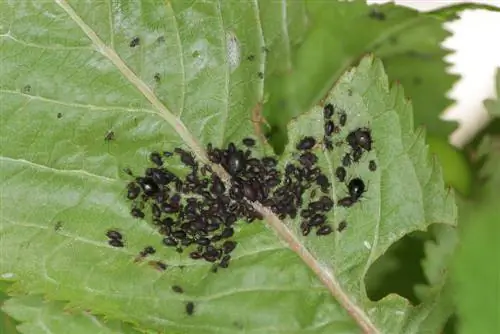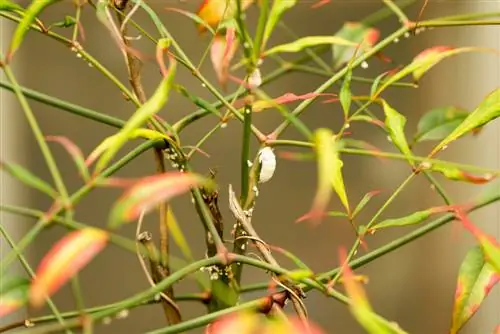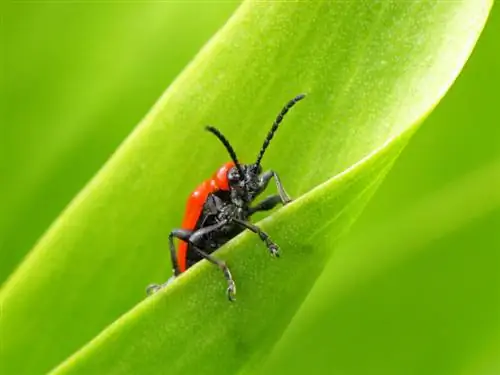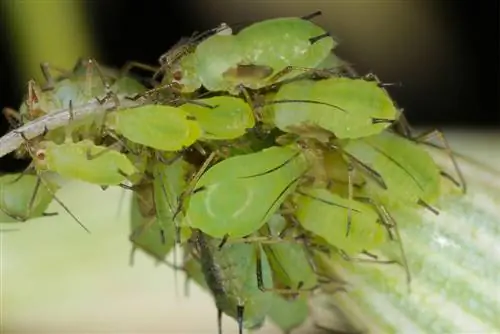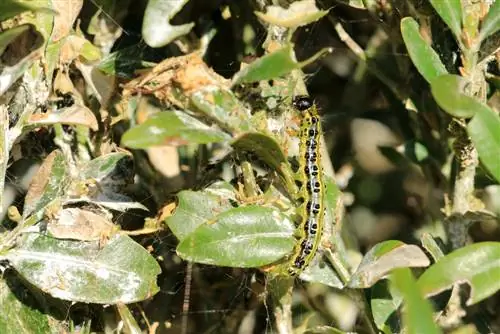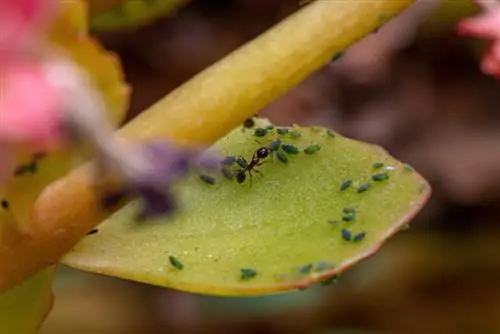- Author admin [email protected].
- Public 2023-12-16 16:46.
- Last modified 2025-01-23 11:22.
Plant protection is important for fruit trees so that they are not attacked by pests. Cherry trees are often affected by sucking insect pests. Caterpillars and flies also appear. They affect the development of leaves, flowers and fruits.
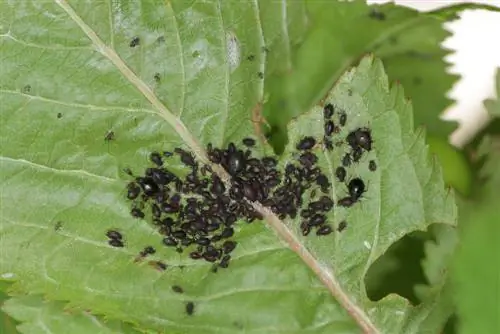
What pests occur on cherry trees and how can you combat them?
Common pests on cherry trees are cherry aphids, which suck plant juices, small frost moths, whose caterpillars eat leaves and fruit, and cherry fruit flies, which cause soft, brownish spots on the cherries. Water jets, glue rings and fine-mesh nets are suitable for combating.
Cherry Aphids
The insects suck plant juices from the leaves. Young plants that show growth inhibition after a severe infestation are particularly at risk. Leaf nests that appear in the area of the shoot tips are typical on sweet cherries. Sour cherries suffer from curved leaves and compressed shoots. The sticky excretions of the pests promote the settlement of black fungus. If flowers are affected, the fruits will not ripen normally.
When does an infestation become harmful?
Eggs of the aphid species overwinter on the trees. Larvae hatch when the buds open and suck out the leaves. Between May and June, the dark brown colored lice leave the cherry trees and settle on herbaceous plants. The winged generations return in autumn to lay their eggs again between the bark parts.
How to determine the severity of the infestation:
- count aphid colonies on the shoot tips from the second flowering period
- Control makes sense if more than 100 shoots are affected
- Damage threshold is two to five colonies per shoot
Control measures
Hosting with a hard jet of water rinses the pests from the leaves. An aqueous soap solution prevents further spread. Water the trees regularly with strengthening plant spray from nettles so that they develop harder leaves.
Small frost moth
The caterpillars hatch from overwintering eggs located in cracks in the bark before bud break in May. They feed on emerging leaf and flower buds until June and on leaves or fruits in the later growing season. Initially, the foliage becomes pitted until the branches appear completely bare. Damaged fruits resemble a hollow hemisphere. The larvae retreat into the soil in summer to pupate. The new generation of butterflies will hatch from October.
This helps
Glue rings prevent the flightless females from laying eggs because they stick to the sticky surface (€7.00 at Amazon). Belt the cherry trees well in advance of the species' flight times. However, these measures pose a danger to birds that peck the butterflies from the trunks. While they feed, the caterpillars glue their beaks together. Preparations containing the bacterium Bacillus thurigiensis, which are used in spring at temperatures above 15 degrees, are effective against caterpillars.
Cherry fruit fly
The pest causes soft and brownish spots on the fruit. The pulp rots in the core area due to the maggots living in it. Infestation is clearly visible at the top of the crown, while the lower cherries are hardly affected. Harvest maggots and damaged specimens and cover the ground with a fine-mesh net from May to June. This will prevent the maggots from retreating into the soil to pupate.

